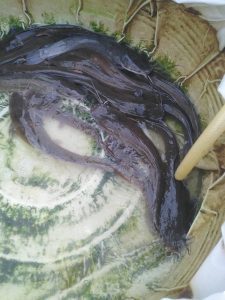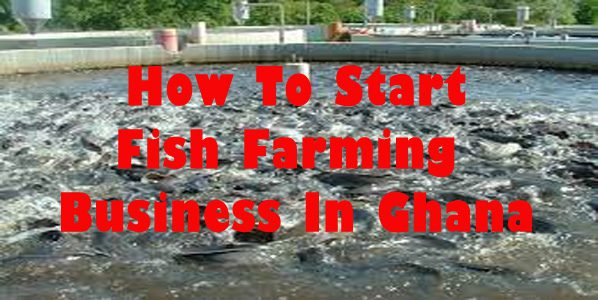Fish farming in Ghana is one of the fastest-growing sectors in the agriculture and farming sector. Catfish and Tilapia fish farming is one of the most common farms in Ghana.
To start fish farming in Ghana, you need secure a farm location, install fishery equipment, erect ponds, introduce your fingerlings and start feeding them.
So, follow us as we give you detailed information on how you can start a lucrative and profitable fish farming business in Ghana.
[Beginners Guide] How to start a fish farming Business in Ghana (Tilapia and Catfish)

With a high-profit margin, fish farming in Ghana is a popular agribusiness in the country. Fish accounts for around 60% of the animal protein consumed in Ghanaian diets. More than half of the fish available in Ghana is wild-caught, with the rest coming from imports, aquaculture, and aquaculture.
Read Also: How To Start Bee Farming In Ghana [Practical Guide]
Fishery items are in short supply, so the government is supporting local fish farming to improve fish production in response to the strong demand for fish.
This gives a possibility for a business owner to profit from the country’s fish growing operation.
Step By Step Guide On How To Start Tilapia fish farming in Ghana Pdf
To start Tilapia fish farming, here is the step you need to start the business;
Step 1: Secure Farm location
The first thing you need to do is look for an area where you will site your fish farm. While searching for a farm location, consider nearness to quality water supply, consider access to the road network, and at the same time nearness to fish market.
Read Also: How To Start Poultry Business In Ghana [11 Step By Step Guide]
These factors will give you an insight into where is best suited for your farm.
Step 2: Decide the Fish culture you will integrate
A fish culture system must be chosen depending on where you live. Water, physical installations, feeds, labor, and fish are all components of a fish farming system.
Read Also: [Beginners Guide] How To Start Snail Farming In Ghana
Fish are the end product of each of these combinations (or other aquatic animals). As long as the value of inputs utilized during a given period is less than the value of fish produced, these combinations are appropriate.
Step 3: Erect your pond
The location of your fish farm determines the type of pond you should build. We will go over several different designs for fish ponds, all of which can be put to good use.
Read Also: How To Start Farming In Ghana Step By Step Guide
Types of Fish Ponds In Ghana
Earthen Pond
One of the more practical options for sites near rivers or swamps is an earthen pond. There are a variety of pond solutions available if your area isn’t swampy. Plastic, concrete, and even tarpaulin ponds can all be used, but tarpaulin is the least expensive.
Read Also: How To Start Rabbit Farming In Ghana [Beginners Guide]
Tarpaulin Pond
Tarpaulin ponds, as the name implies, are fish ponds constructed from tarpaulin. Aquaculture in tarpaulin ponds, unlike hydroponic farming, is not constrained by land availability.
Plastic Pond
For the construction of these ponds, a wide variety of plastic containers are often employed.
Concrete Pond
A concrete pond is one that has been built by piling concrete blocks on top of one another.
Step 4: Fumigate your pond
Before introducing fingerlings into your ponds, ensure you prevent the growth of bacteria and fungi in your ponds by adding anti fungi and anti-bacteria chemicals in the right proportion to your pond.
Read Also: How To Start Bee Farming [Step By Step Guide]
Step 5: Install a Water supply and drainage system
As you know, the major component of any successful fish farmer is the availability of water. Ensure you install a water system on your fish farm.
Another thing is, that you need to devise a means of draining the water in your pond. This is important so as to avoid pathogens and diseases in your fish farm.
Step 6: Buy tilapia fingerlings
The next stage is bringing your fingerlings into your pond. Ensure you buy the quality breed of fingerlings; this is because your fish farm productivity is independent of the quality of breed you introduce in your ponds.
Read Also: How To Start A Goat Farming Business [Step By Step Guide]
Step 7: formulate a feeding plan
If you want your fish to grow well and faster, formulate a quality feeding plan, this will ensure your fish develops quickly, it will avoid competition in your ponds which will prevent your fish from eating themselves.
How to Start Catfish Farming In Ghana
Catfish farming is another species of fish that is majorly raised in Ghana, here is a step by step guide to starting catfish farming in Ghana;
Step 1: Site your fish farm
Before anything, you need to situate your fish farm in areas that are devoid of natural predators such as giant birds, snakes, and other predators that may harm your fish farm.
Step 2: Construct Fish Pond for your catfish business
The location of your fish farm determines the type of pond you should build. We will go over several different designs for fish ponds, all of which can be put to good use.
Types of Fish Ponds for Catfish In Ghana
Earthen Pond
One of the more practical options for sites near rivers or swamps is an earthen pond. There are a variety of pond solutions available if your area isn’t swampy. Plastic, concrete, and even tarpaulin ponds can all be used, but tarpaulin is the least expensive.
Tarpaulin Pond
Tarpaulin ponds, as the name implies, are fish ponds constructed from tarpaulin. Aquaculture in tarpaulin ponds, unlike hydroponic farming, is not constrained by land availability.
Plastic Pond
For the construction of these ponds, a wide variety of plastic containers are often employed.
Concrete Pond
A concrete pond is one that has been built by piling concrete blocks on top of one another.
Step 3: Detoxify and fumigate your ponds against fungi
The next thing you should do is to wipe your pond of impending dangers such as water salinity level, Acidity level, and more. You can do this by taking a sample of your water to a water agency that is closer to your vicinity.
Step 4: Buy Catfish fingerlings
Next thing is to buy the fingerlings and introduce them to the ponds you have prepared. Take caution against buying the wring breed, low breed. You can request the service of an expert to get the best quality catfish fingerlings that are good for your farm.
Step 5: Draw a feeding plan
Ensure you prepare a well-balanced diet itinerary for your fish farm. This will tell on the overall health of the fish, productivity and other factors you do not pay attention to that may affect your fish farm.
Step 6: Register with an expert Veterinary
Book a section with a vet to come to check on your farm once in a while. This will help identify potential diseases quickly, treat affected ponds, and other precautions to take to avoid losing your fish to diseases.
How much does it cost to start a fish farm In Ghana?
It will cost you around 400,000 to 1,000,000 Ghana Cedis to start a fish farm in Ghana
To start fish farming in Ghana, you need secure a farm location, install fishery equipment, erect ponds, introduce your fingerlings and start feeding them.
Is fish farming a profitable business in Ghana?
Yes, fish farming is one of the most lucrative farming businesses anyone can start in Ghana.
How much does it cost to construct a fish pond in Ghana?
To construct a standard fish pond in Ghana, you will have at least half a million Ghana Cedis.
Which fish is best for farming?
The best fish to farm in Ghana is Tilapia and catfish.
How to start a backyard fish farming business in Ghana
To start backyard fish farming business in Ghana, you need secure a farm location, install fishery equipment, erect ponds, introduce your fingerlings and start feeding them.
Conclusion
We have talked about how to start a profitable fish farming training in Ghana, we have given you both a catfish guide and the Tilapia fish guide.
If there is other information you need to know, kindly drop your comments via the comment section.





I want to start mudfish farming in my house. Kindly help me with a contact number to call for fingerlings to start the business.my contact/whatsapp: 0242963644
Waiting for urgent respond
I will need your location and how your active email address
Hi Adewebs I want to start fish cultivation. In Ghana. Location is outskirts of Accra. Could i get a contact so we can have a chat please
Thank you.
You can contact me via +2348131116906
And you can contact me via thr official email [email protected]
Where do I get quality tilapia fingerlings to start backyard fish farming.?
It’s our pleasure helping you out. You can get through to me via our official email address [email protected]
Also You can connect with us on Facebook by searching for agrolearner.com and liking and following our page
1 What is the cost of the fingerlings (tilapia and catfish
2 What is the cost of the feed
On average, one fingerlings should cost between 0.38GHC and 10GHC.
For the feed, it can range from 200-800GHC depends on the kilo, brand and what you needed for your fish farm.